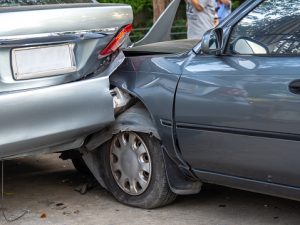West Virginia Rear End Crash Prevention Through Technology
 The National Highway Traffic Safety Administration and Insurance Institute for Highway Safety made a joint announcement recently indicating a deal had been reached with auto makers. The deal involves NHTSA and IIHS taking steps to move forward with requiring front crash prevention systems to be installed as a standard feature in all vehicles in the future. While there is no clear date yet for when this type of crash prevention technology will become mandatory in cars, a mandate is moving forward.
The National Highway Traffic Safety Administration and Insurance Institute for Highway Safety made a joint announcement recently indicating a deal had been reached with auto makers. The deal involves NHTSA and IIHS taking steps to move forward with requiring front crash prevention systems to be installed as a standard feature in all vehicles in the future. While there is no clear date yet for when this type of crash prevention technology will become mandatory in cars, a mandate is moving forward.
As these technologies are incorporated into more and more cars, the question becomes effectiveness. It is imperative to determine whether crash prevention systems will actually make a substantial impact in reducing collision rates. The good news is, when it comes to front crash prevention systems, research shows the inclusion of these systems in vehicles can have a profound impact on bringing down the rates of rear-end car accidents.
How Crash Prevention Technologies are Bringing Down Rates of Rear-End Crashes
There are two primary types of crash prevention technologies which are considered part of front crash prevention systems and which are designed for the reduction of rear-end crashes. The first technology is an automatic braking system which will stop the car automatically in an emergency situation if the vehicle is about to hit something and if the driver doesn't act to hit the brakes. The second technology is a warning system letting the driver know to hit the brakes because the car is about to hit something. Some vehicles incorporate only one of these types of crash avoidance technologies, while others incorporate both.
Motor Trend reported on recent research from IISH looking into whether either or both of these technologies work. IIHS looked at police report data on accidents to compare crash rates for cars with crash prevention systems versus crash rates for similar cars without the systems installed. Researchers used information on vehicle trim kits to help assess whether crash prevention technologies were installed in vehicles included in the study or not.
The research showed the crash prevention systems- and particularly the emergency braking system- made a substantial impact on rates of rear-end crashes. Not only did having a system in place make a crash less likely to occur, but it also made it less likely serious injuries would be sustained when a rear-end accident did happen.
The chances of a rear-end crash occurring were 40 percent lower if the car was equipped to brake automatically. The chances of an injury with a car equipped with automatic brakes were 42 percent lower in situations where rear-end accidents did happen despite the automatic braking.
The chances of a rear-end accident in a car with only a warning system were 23 percent lower and the risk of serious injury in a rear-end collision involving a car with a warning system was six percent lower than the risk in a car with no crash avoidance features. Obviously, this technology and and will make a positive impact once it becomes more common in vehicles on the road.
